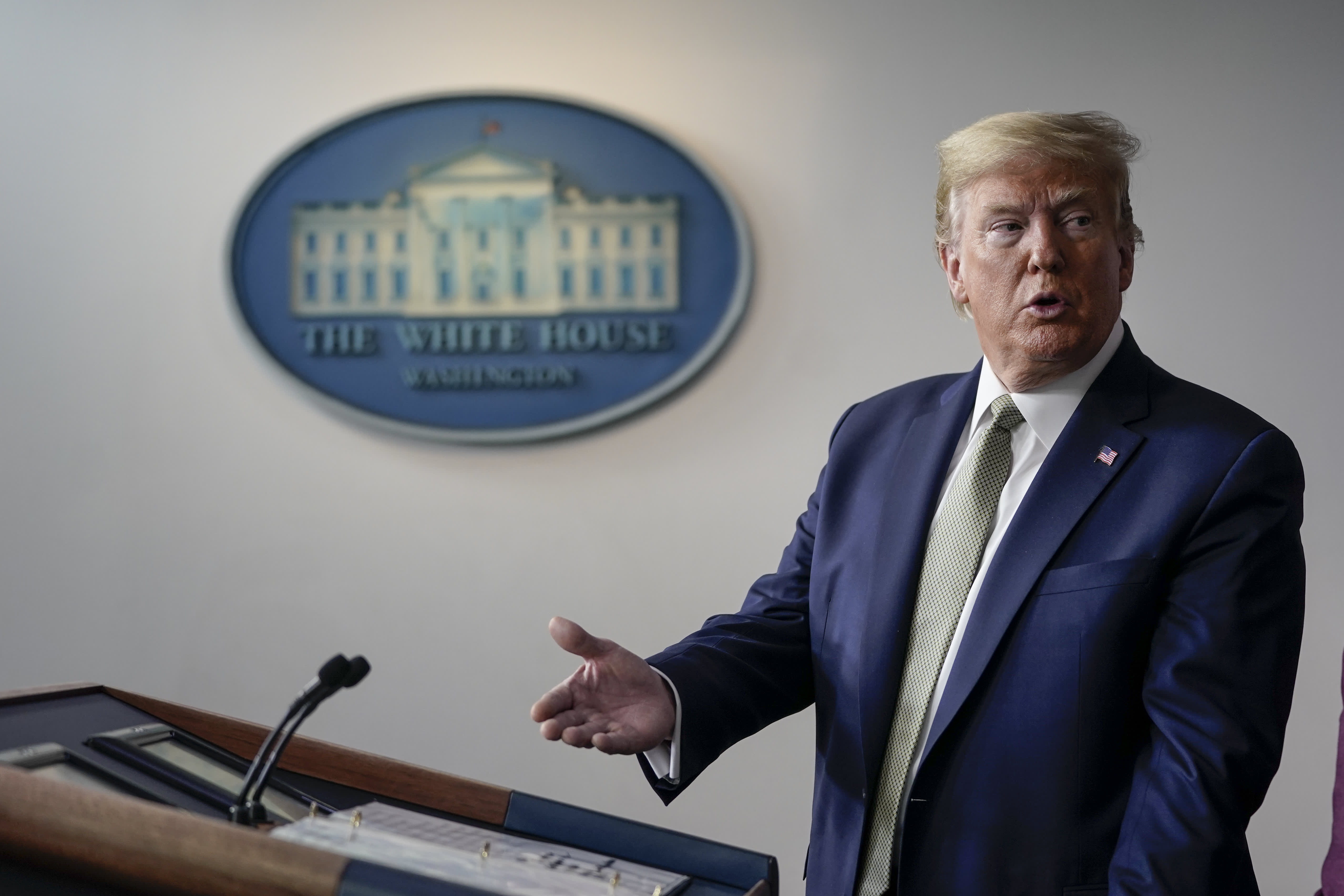U.S. President Donald Trump, joined by members of the Coronavirus Task Force, speaks about the coronavirus outbreak in the press briefing room at the White House on March 17, 2020 in Washington, DC. (Photo by Drew Angerer/Getty Images)
Drew Angerer
Two financial-relief measures the Trump administration is weighing to fight the economic scourge of the coronavirus would have drastically different impacts on the rich and poor, according to a new analysis.
A payroll tax cut would overwhelmingly benefit the richest Americans, and would do little to prop up the economy, according to the Institute on Taxation and Economic Policy.
On the other hand, the financial benefits of writing a check for a few thousand dollars to each U.S. household would tilt heavily toward low- and middle-income Americans, according to the think tank.
“A payroll tax cut is going to provide more benefits to high-income people who don’t really need help right now,” said Steve Wamhoff, director for federal tax policy at the institute.
Wealthy Americans would be more likely to save and invest the windfall, whereas poorer individuals would likely funnel money into the economy quickly.
“[The tax cut] won’t have the same short-term, immediate boost people are looking for right now for the economy,” Wamhoff said.
The coronavirus, which has infected more than 200,000 and killed at least 8,000 people since it emerged in China late last year, is wreaking havoc on the U.S. economy.
Small businesses and its workers have suffered as states and cities have closed bars, restaurants and gyms. Concert venues and other cultural institutions have shut their doors. Industries such as travel and energy have taken a beating. Consumers are staying home and reducing their spending. To that end, layoffs have already been reported.
A payroll tax cut and household checks are two measures lawmakers are considering to help prevent a recession.
President Trump has recently championed a temporary 0% payroll tax rate as the centerpiece of his proposal to prop up the economy. The idea hasn’t gained much traction in Congress.
Workers and employers each pay these taxes to help fund programs like Social Security and Medicare.
The majority — about 65% — of the tax cut’s financial benefits would accrue for the richest 20% of taxpayers, according to the analysis published yesterday.
More from Personal Finance
Germ-ridden cash may boost use of contactless payments
Treasury and IRS to delay tax payment deadline by 90 days
Here’s why you should resist the urge to buy cheap travel deals
Roughly 25% of the windfall would go to the wealthiest 1%, who have an average annual income of more than $2 million, according to the analysis.
By comparison, only 2% of the benefit would go to the poorest 20% of Americans, who have an average income of $14,400 and who are among the most financially vulnerable in a downturn, according to the report.
There are several reasons for this dynamic, Wamhoff said.
For one, Americans need to have a job to benefit from the tax cut. Business owners, who tend to be wealthier, would get the biggest windfall and it’s unlikely they would pass on their tax savings to employees, Wamhoff said.
The policy also wouldn’t provide an immediate cash infusion since it would be spread out over each paycheck, he said.
Cutting a check to each American — a maximum of $3,500 per American adult and $1,500 per child — would be more progressive, Wamhoff said.
Under this policy, the richest 1% of Americans would only get 1% of the windfall. But the bottom 60% — those with an average annual income below $55,500 — would accrue about half the benefit.
This group is “most likely to immediately spend any new money they receive, providing a kickstart to the economy if it begins to sputter,” according to the analysis.
Lawmakers have shown increased support for the idea. The White House is calling for $500 billion worth of direct payments to Americans households, part of a $1 trillion financial relief package that would also include $300 billion to help small businesses meet payroll obligations, according to the New York Times, which cited a Treasury Department proposal being circulated on Capitol Hill.
The checks would come in two $250 billion rounds, on April 6 and May 18, the amount of which would depend on income and family size, according to the report.
The payroll tax cut and check idea would cost the federal government roughly the same amount of money, according to the Institute’s analysis.
